'It's about feeling welcomed': How gay youth find belonging in Phoenix's ballroom scene
Corrections & Clarifications: A previous version of this article misspelled the name of Ebonee Paragon Mizrahi.
Inside a Phoenix gay bar, the DJ plays ballroom music, a mix of house, hip-hop and electronic.
Everyone's eyes are on a man in his 20s. He puts one foot in front of the other, walking down the stairs and into the spotlight.
He sways his hips, a move called catwalk, and gestures with his hands to tell a story as he reaches the judges' table.
"It's a new girl on the block," the commentator, who goes by Big Blue GG, repeats as his voice matches the beat of the song blaring through the speakers.
When the young man springs his body around and falls to the ground with one foot pointed to the sky, voices in the crowd shout, "Ow."
Some spectators' heads and hands follow as the dancer dips to the ground before getting up, bouncing on his toes in a squat position — a move known as duckwalking — and moving his hands to the beat.
The three judges rise to their feet, waving decorative folded fans signaling that he can move on to the next round.
Drag queen love: Indigenous drag performers light up a high-spirited Pride event
Vogue nights at Stacy's at Melrose
This is Vogue night at Stacy's at Melrose, where dancers live the fantasy of being a top model walking a runway or a dancer performing in a music video.
DJ Image and a dancer who goes by Ebonee Paragon Mizrahi started the biweekly events in May 2022. DJ Image had been hosting a monthly vogue night since 2020.
On vogue nights, Black and brown queer and trans youths like Omar Bojorquez let their bodies tell a story.
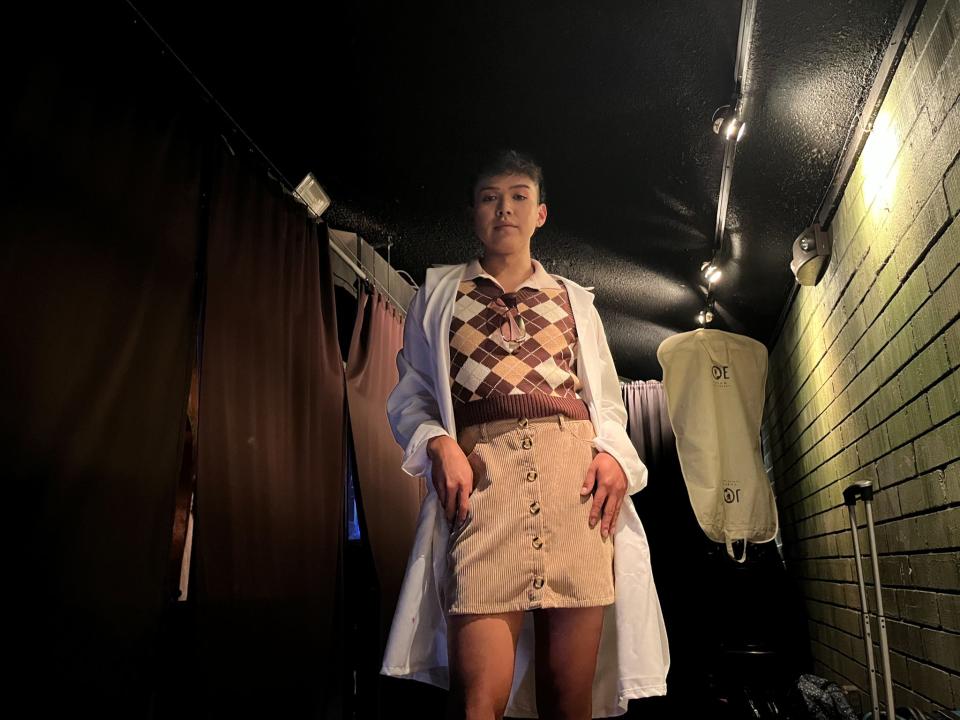
The subculture that has been a safe haven for queer and trans youth for decades originated in New York and made its way to metro Phoenix, where there's a growing LGBTQ population, according to the Williams Institute at the UCLA School of Law, which conducts research on sexual orientation and gender identity law and public policy.
When Bojorquez is out on the floor, he tells a story of a confident 24-year-old Hispanic male who has broad shoulders and is 6-foot-7 when he wears heels.
"Omar dances the way he dances because he just wants to prove that you can literally be whoever you want to be, and nobody can tell you any different as long as you have the full confidence behind yourself and the perseverance," Bojorquez said.
That third Thursday in July, other dancers came out one by one, duckwalking and catwalking, until only two were left on the floor. They battled to outperform one another using the five dance elements that took them years to perfect.
Those five elements — hands performance, floor performance, duckwalks, catwalks and dips — comprise voguing, a dance style that evolved out of the ballroom scene in Harlem, New York, and rose to prominence in the 1980s, according to outhistory.org.
"It's all about your story, and not necessarily just doing literal gestures through your hands. Your energy, presence and spirit also tells your story," said Rylee Locker, who started voguing in 2016.
Baehive Sisterhood: How this Black beekeeper is changing the game
How ballroom got its start
The mini balls held at Stacy's at Melrose can be traced back to drag balls during the post-Civil War era. Those balls were popularized during the Harlem renaissance, according to the National Museum of African American History and Culture.
It wasn't until the 1970s when Crystal LaBeija, in response to racism against Black and Latino contestants in drag balls, formed the first ballroom house, the Royal House of LaBeija. It was the start of today's ballroom scene.
Houses like LaBeija were known as safe havens for Black and Latino queer and trans youth, who were sometimes rejected by their biological families and experiencing homelessness and addiction. An appointed "mother" or "father" led the house, and their members were called "children." The houses competed against one another in the balls.
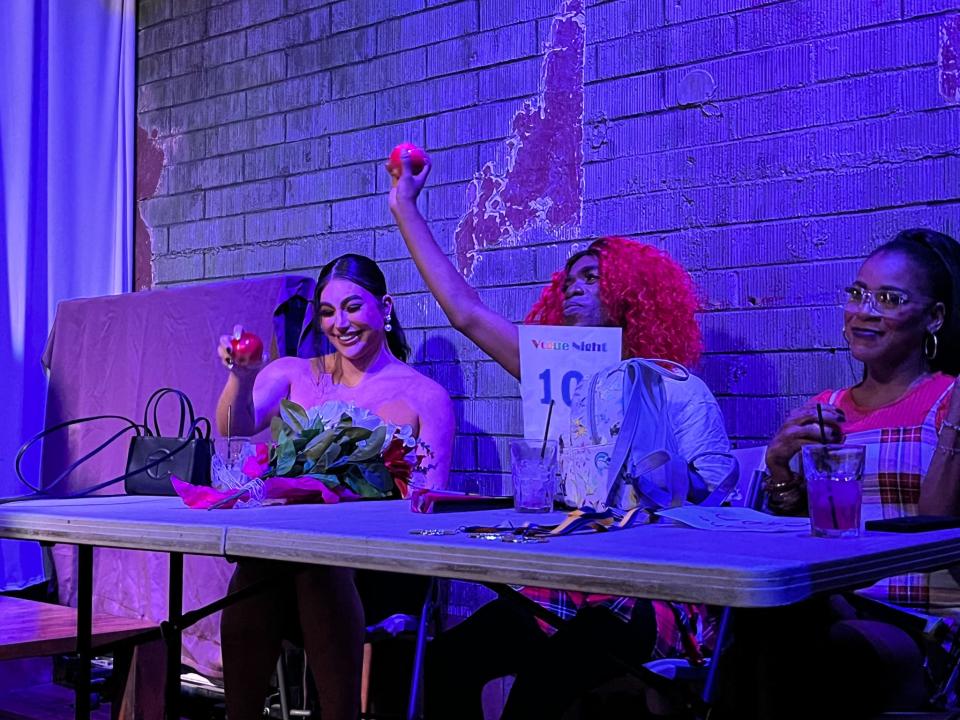
"To be a mother means I have to be headstrong and be there for my kids. I always have to make sure I'm giving them the right advice and guiding them in the right direction when it comes to performances and in real life," Ebonee Paragon Mizrahi, 28, said.
"Because us growing up as gay, especially Black gay men, we don't have a lot of that from our parents, being how the African American culture can be when it comes to homosexuality."
For many in the ballroom community, their biological family starts to fade away as their chosen family becomes more present.
"They're the ones calling me, telling me happy birthday," said Elle Spinelli, who started voguing in 2017.
Dig in: How a mom and her daughters bring 'something from the islands' to their metro Phoenix cafe
How Phoenix got its first kiki house
Avery Jenkins, 24, discovered the dance style when he was 16 and saw a Tumblr video of a woman voguing in a Sailor Moon cosplay. That sent him down a rabbit hole. He searched for balls in Arizona but found nothing.
A couple of years later, as a student at Arizona State University in 2017, he learned that voguing classes were being offered in Mesa. He went to a 7 p.m. class every Monday where he battled mentors who "ate him for breakfast, lunch and dinner" and created lifelong friendships.
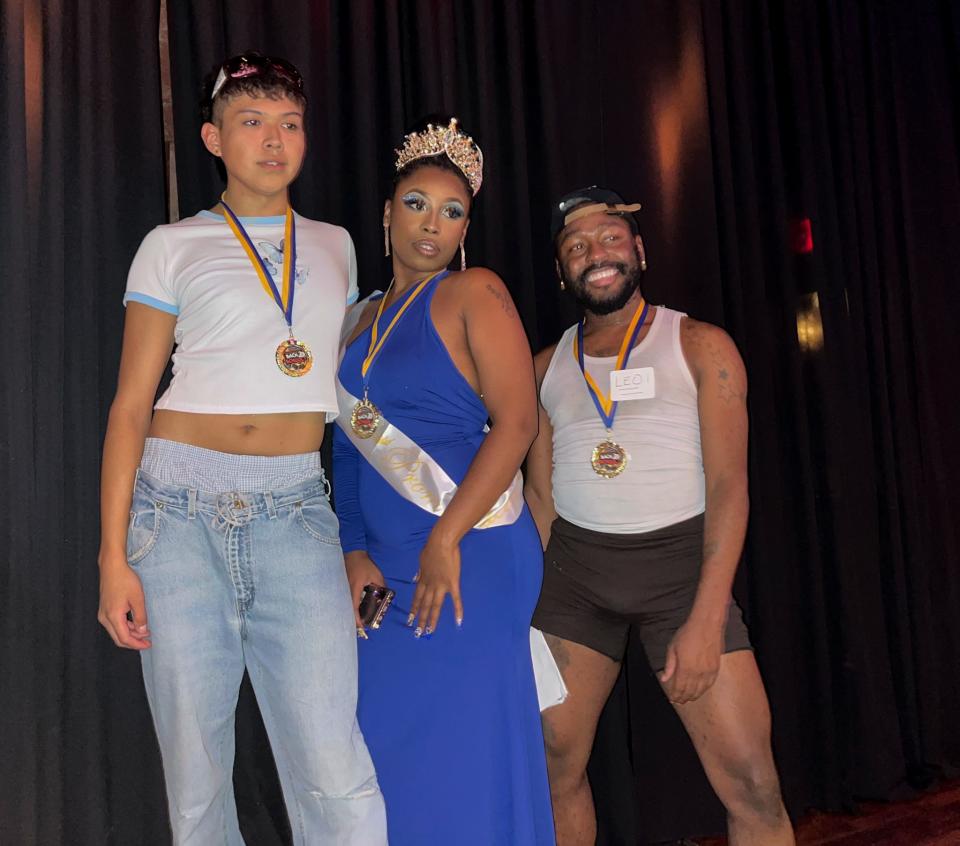
Those friendships sparked the creation of the House of Paragon, where Jenkins is the father of eight children.
After a night of voguing at Tempe Town Lake in May 2020, Locker told Jenkins, Spinelli and two others that she wanted to create the first kiki house in Arizona. Locker's mentor, Marcus White, had just passed away and she wanted to continue his legacy.
She said White had wanted to create a kiki house, which originated from social gatherings at health outreach organizations where members of the ballroom community would socialize and practice for mainstream balls.
A kiki house provides a space for low-income LGBTQ youth of color to gain exposure, competition and leadership experience, according to a paper published by Tina Jones of the SUNY Downstate Hospital in New York and Jermaine Ellis of the Hetrick-Martin Institute in New York.
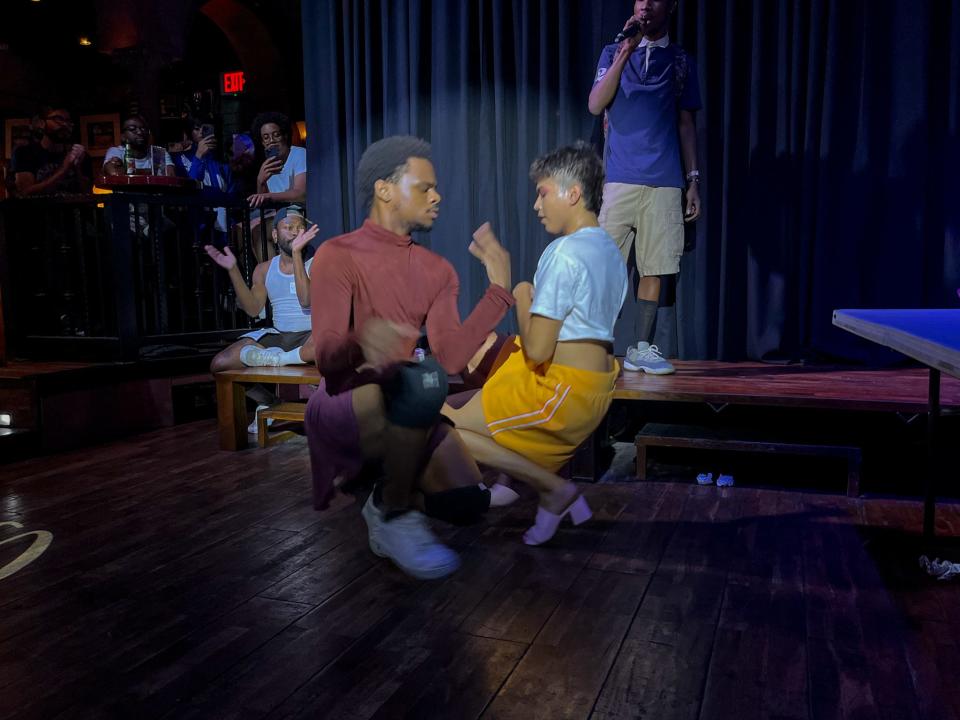
Locker met White in her sophomore year at ASU. He had joined the college as an assistant professor of dance in 2016. She took vogue classes outside of ASU. In White's class, she learned about its history.
Before White died, he was the lead organizer for ASU's Come AZ You Are festival where he brought legends from the ballroom community to metro Phoenix.
In 2018, he organized an event at Stacy's at Melrose called Pose to the Polls, named after the TV show "Pose" that highlighted the ballroom scene in New York in the 1980s. He organized the event to encourage Black and brown LGBTQ youth to vote.
Inventing the House of Paragon
Locker set out to create the House of Paragon as White had imagined, a place where everyone is supportive, has a place to grow and is not afraid to mess up, Locker said.
She selected members based on what she saw as a model of excellence — something people proved through the ballroom scene and in their everyday lives by showing up for one another and becoming community leaders.
"He would be so proud of how far we've come and what we've built so far," said Spinelli, who became the mother of the House of Paragon after Locker moved to Philadelphia in August 2020.
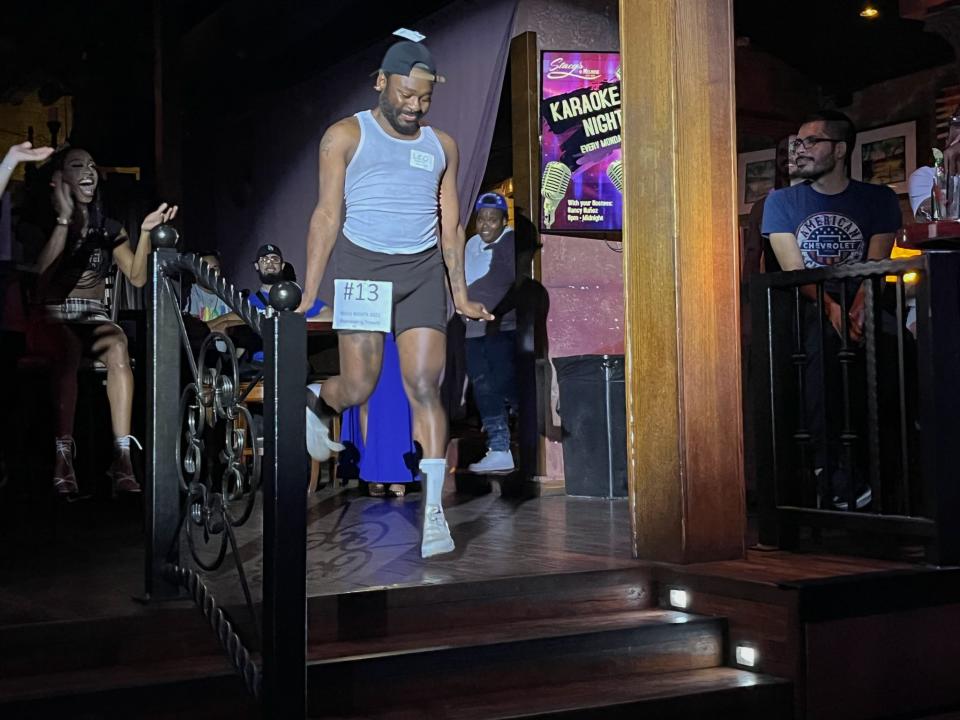
When Leo Ahmon joined the house, he said it felt like he was joining a dance team. But as time went on, he realized he was part of something bigger than himself.
"It's about feeling welcomed and loved and being freely able to express yourself — however it is that you want to do that in whatever kind of way around a group of people that are openly allowed to do exactly the same thing," Ahmon said.
'I didn't know many gay people'
Ahmon first found out about ballroom in 2016. He had just moved to Dallas and learned he was HIV positive. A counselor told him to attend a vogue class at the health center every Friday night. The first time he went, he sat and watched people dance in heels as they threw themselves around the room.
"I didn't know many gay people, let alone gay people with HIV or gay Black people with HIV. So it was a kind of a culture shock," Ahmon said.
"Coming from Arizona, being who I am, and literally being invited to a space of a group of people that were exactly like me. And not only were they all like me, but they're happy, having fun together and communing with each other through dance."
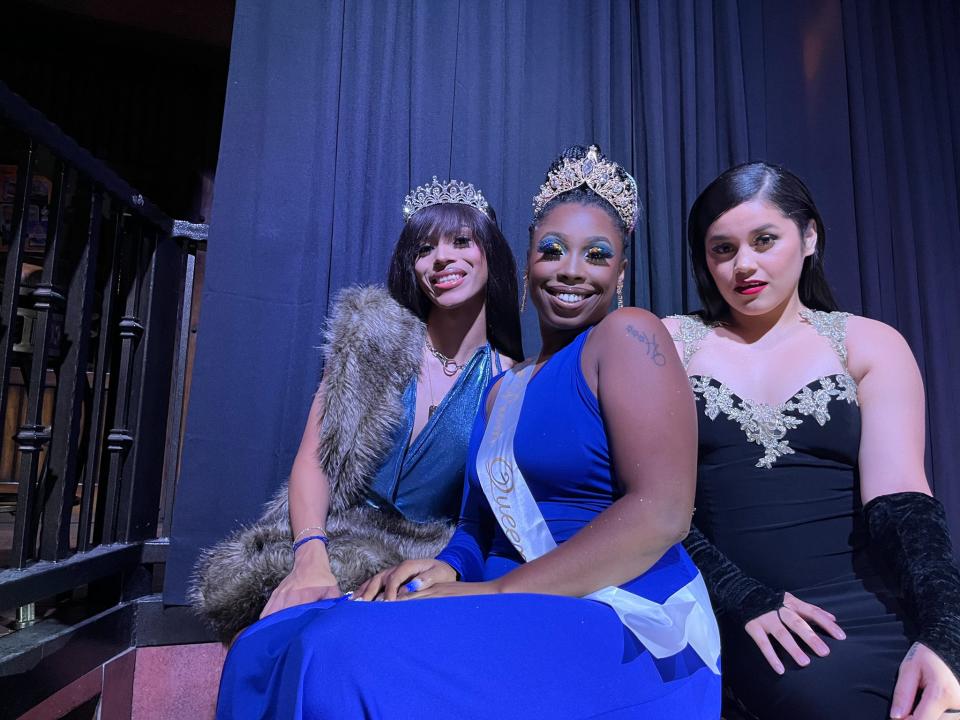
Ahmon has been dancing since his second-grade talent show, but it took him a while to join the others. Soon, he showed up every Friday wearing black knee-high stiletto boots and practiced his duckwalk for seven months.
"Growing up, you weren't supposed to be feminine — even though I was because I couldn't get away from it. It was something that I suppressed," the 26-year-old said, adding that those moments in the class were "empowering."
In 2021, he walked in his first ball, a kiki ball. He walked a runway category called "Butch Queen Up in Pumps," where a cisgender male walks like a model wearing pumps.
His mother and a best friend watched as he won the category.
The future of ballroom in Phoenix
Diana Chunga and Ahmon said ballroom culture is needed in Arizona, especially for young people.
"The kiki scene was created for the youth and by the youth," said Chunga, 23, adding that there needs to be more vogue events for people under 21.
"I feel like there's so many LGBTQ kids out here that want to be a part of it, and they can't because it's at these bars or at these clubs, and I just think it's really unfair," she said.
Currently, Stacy's at Melrose is the only place in metro Phoenix that has a dedicated vogue night, according to DJ Image.
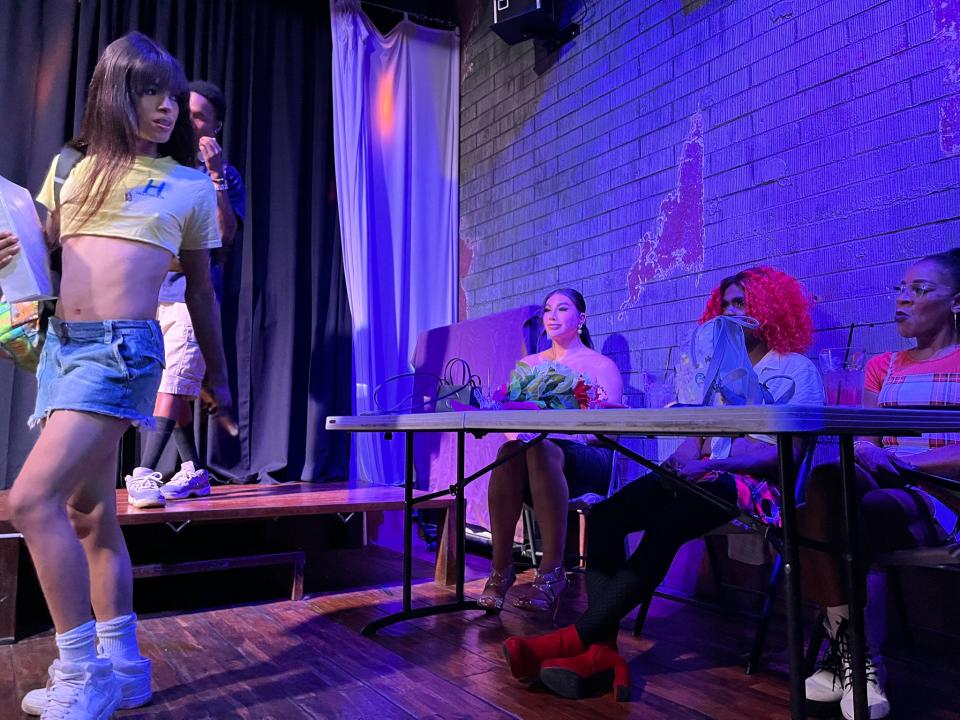
"I feel like if I had ballroom culture, I wouldn't have felt so alone. I've seen the changes that ballroom culture has done for other 17-year-olds and young people here in Arizona," he said.
"I think back to the positive impact that it could have had on mine — to have the support that you may not have anywhere else, to be able to connect with people that are like you."
Every Monday at 7:30 p.m., the founders of the House of Paragon teach the five elements of vogue to a small group of dancers ranging from 16 to 35 years old at Nation Studios in north Phoenix.
The House of Paragon plans to have a kiki ball early next year and has goals of creating more vogue events for youths. They also have a dream of being on the TV show "Legendary," a voguing reality competition.
Although the competitions are judged, Jenkins wants people to understand that they are welcome and it is a safe space.
"We're trying to work our way up into a community that really respects the culture and understands it," Jenkins said.
Vogue nights at Stacy's at Melrose
When: 9 p.m.-2 a.m. on the first and third Thursdays of the month.
Where: Stacy's at Melrose, 4343 N. Seventh Ave., Phoenix.
Admission: Free.
Details: 602-264-1700, https://stacysatmelrose.com. Follow @djimagemusic and @kikihouseofparagon on Instagram to learn more about vogue events in Arizona.
Reach the reporter at Jonmaesha.Beltran@gannett.com or on Twitter @Jonmaesha.
This article originally appeared on Arizona Republic: Ballroom scene in Phoenix: Voguing at Stacy's at Melrose

